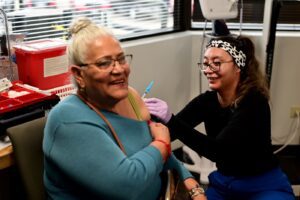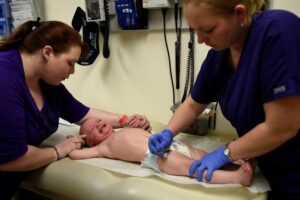Earlobes are generally smooth regardless of size, color, shape and thickness. However, some people have a crease in their earlobe. This line splitting the earlobe in two is also known as “Frank’s Sign”.
It was named after the man who first identified it an important sign rather than a simple line on the skin.
In 1973, Sanford Frank wrote a letter to the New England Journal of Medicine, he explained the possible link between an ear crease and heart disease as found by his research.
Ear Crease And Heart Disease
A number of other studies have later been carried out in this field, and most of them support Frank’s research. However, none of the studies has definitively determined why heart disease is possibly linked with the earlobe crease.
One theory includes that lack of blood flow to the ears leads to the formation of the lobe wrinkle because if the blood can’t get through to the ears, there’s probably a blockage somewhere in the body.
Another theory states that weakening of elastin and collagen fibers in the ears also indicates a similar weakening of coronary arteries. The thing is the coronary arteries end at the ears meaning that vascular disease in this part of the body points toward a vascular disease further up the line.
Other Theories
According to a Japanese study, a diagonal earlobe crease (DELC) is the result of shortened cell telomeres, areas at the end of each strand of DNA protecting cells from damage. Short telomeres are often related to metabolic syndrome. As the study found, DELC “might be a useful indirect marker of high-risk patients.”
A Noticeable Symptom
Even when there are no other symptoms, a visible earlobe crease can indicate cardiovascular disease. In a study published in 2014, a man with hypertension, who displayed no symptoms of heart problems, except for Frank’s sign on both earlobes, went to an outpatient clinic. He was referred to further testing, which showed that his left main coronary artery was 80% blocked and his right was 90% blocked. “The patient underwent 3-vessel coronary artery bypass graft surgery and has since done well.”
Other Factors
Aside from the possible correlation between Frank’s sign and heart disease, prevalence of DELC may also be partly cultural/regional.
In a Japanese study, which revealed a strong correlation between ear crease and heart disease, the prevalence among the 1000 study subjects was less than expected.
“It is concluded that: the prevalence of EC [ear crease] in Japanese adults is very low compared with the results of previous studies in Europe and America; the prevalence of EC tends to increase with advancing age but is unrelated to other risk factors for CHD [coronary heart disease]; a statistically significant association between EC and CHD is seen from multivariate analysis using both clinical and angiographic criteria in the diagnosis of CHD.”
Can Ear Lobes Give Other Signs?
DELC can be an indicator of heart disease, but not in combination with other conditions. A study examining DELC as a reliable identifier of vascular disease and retinopathy in diabetics found that it wasn’t.
Therefore, a grading system for DELC was developed to show the severity of possible cardiovascular risk:
- Unilateral incomplete – least severe
- Unilateral complete – moderate
- Bilateral complete – most severe
All in all, it’s important never to ignore this sign as early prevention is the best treatment for cardiovascular disease.





